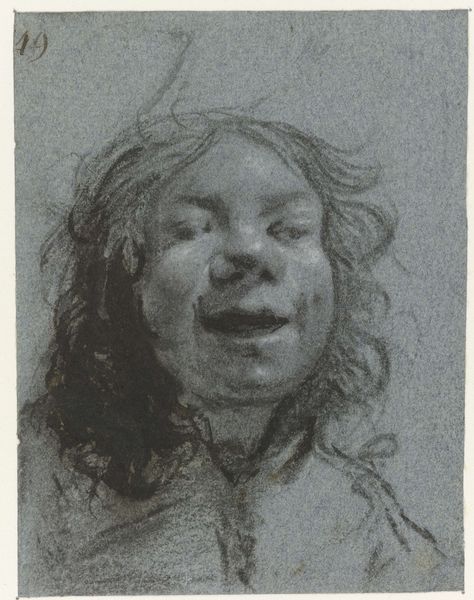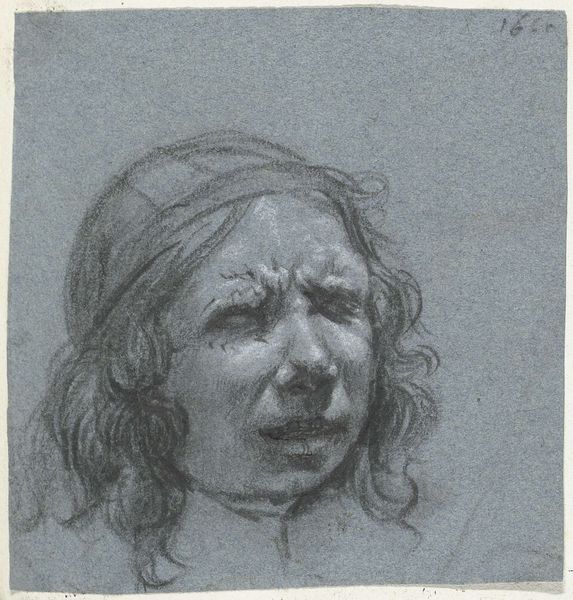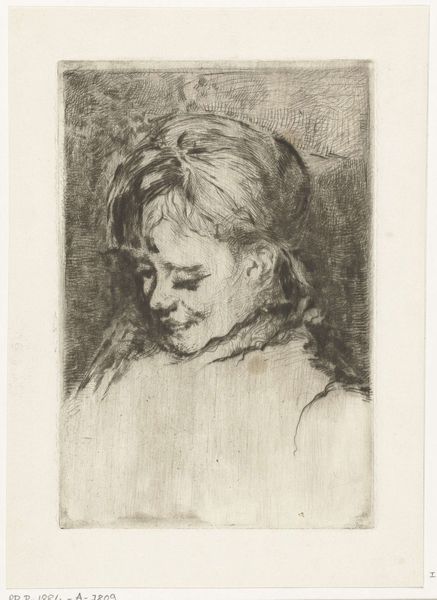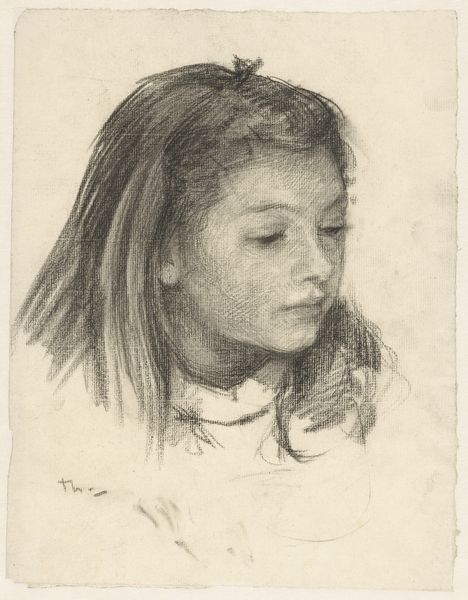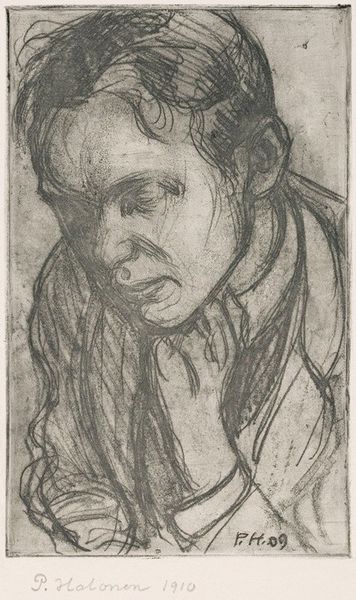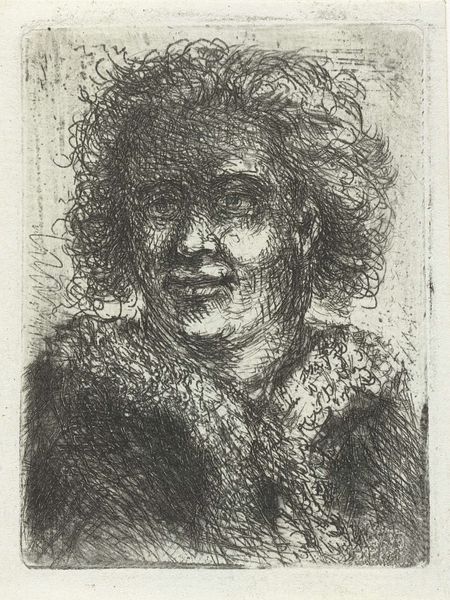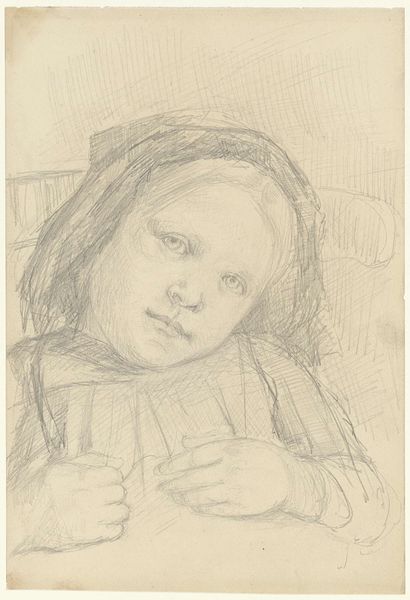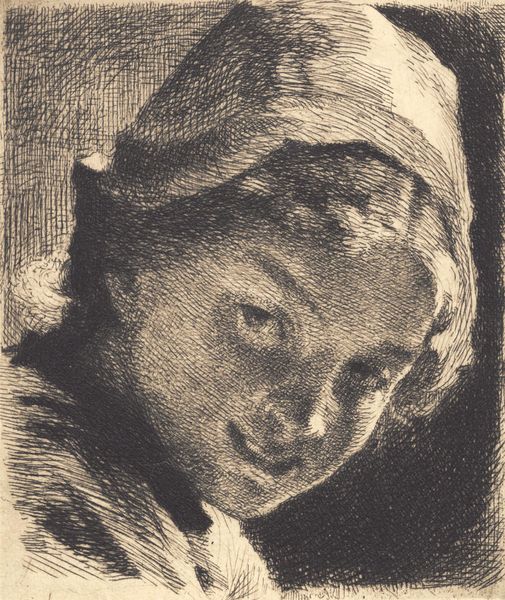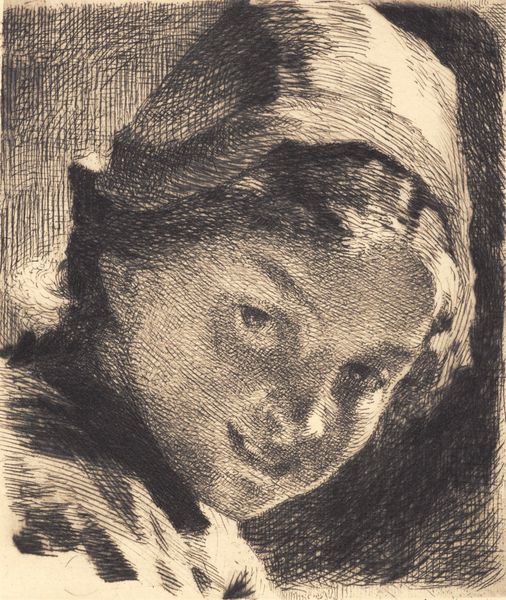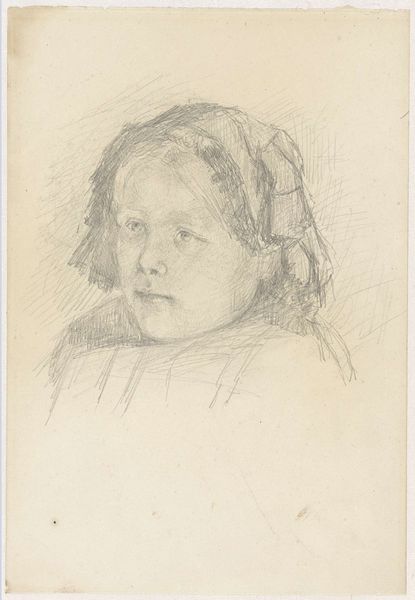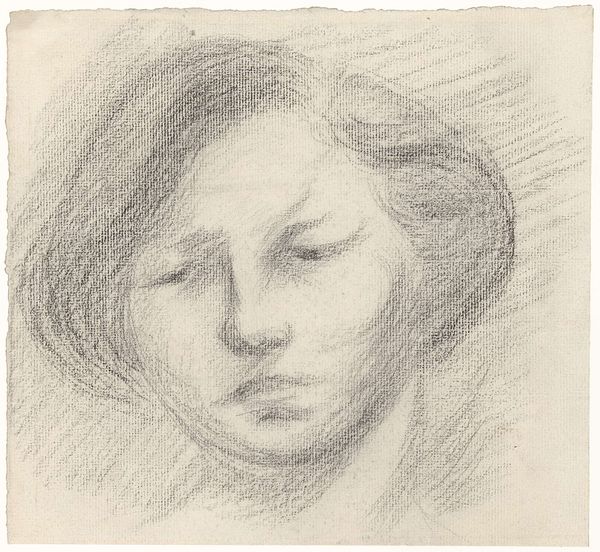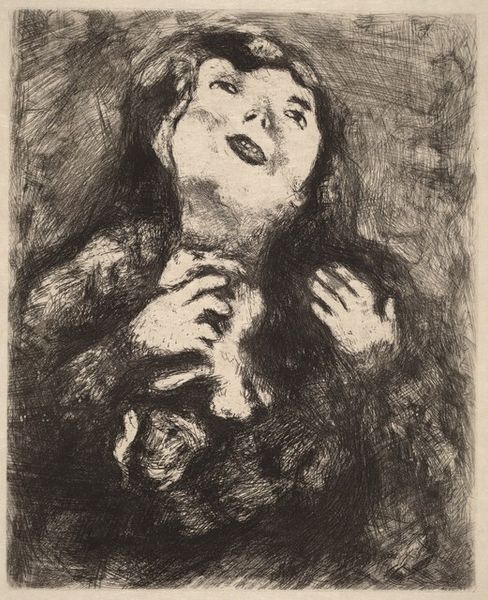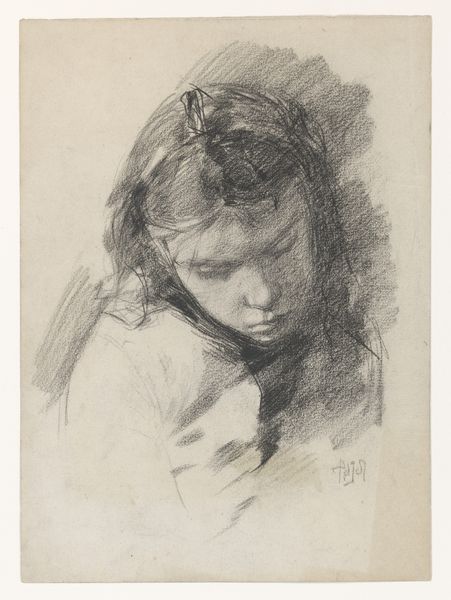
drawing, charcoal
#
portrait
#
drawing
#
self-portrait
#
baroque
#
dutch-golden-age
#
pencil sketch
#
charcoal drawing
#
figuration
#
pencil drawing
#
portrait drawing
#
charcoal
Dimensions: height 90 mm, width 67 mm
Copyright: Rijks Museum: Open Domain
Curator: This is a compelling self-portrait rendered in charcoal and pencil, attributed to Moses ter Borch, dating from before 1661. It's part of the collection here at the Rijksmuseum. Editor: Right away, it grabs you, doesn’t it? There’s this raw vulnerability… like a half-formed thought caught on paper. Is it just me, or is there a breathlessness to it, amplified by that slight opening of the lips? Curator: That “breathlessness,” as you put it, may indeed reflect something about ter Borch’s psychological state, or perhaps about artistic conventions of the period. Self-portraits became increasingly popular as artists explored their individual identities and status within society. Editor: Individuality seems like a thread woven right through it, despite the Baroque style. The gaze isn't directed outwards at all; instead, it’s turned inwards… almost wary, slightly haunting. You sense he's wrestling with something—a self-doubt maybe? Or just pure existential angst? Curator: Such inwardness could certainly speak to the complex social pressures of the Dutch Golden Age. Artistic patronage was shifting. Artists increasingly had to cater to a broader, middle-class audience, necessitating a heightened sensitivity to personal emotions and motivations within their work. Editor: Do you get the feeling that he stopped mid-thought? There's an incomplete air about the face as a whole. Is the portrait meant to capture fleeting humanity in motion rather than perfect and frozen in time, maybe as a way of breaking the classical rules and structures in Baroque traditions? Curator: That suggestion underscores the tension between artistic aspirations and socio-economic constraints for artists like ter Borch. Creating emotion, or an unfinished impression, became another element within his overall artistry. He seems to leave enough space that the public is asked to pause with him to question identity itself, to meet in between completion. Editor: It reminds me that what an artist leaves unsaid can often shout the loudest. In this quiet pose, perhaps he whispers an eternal query. Art can do this; reflect what society seeks. What more could anyone want from art than something left open for discussion. Curator: A fascinating perspective that brings the politics and cultural setting of this intimate piece alive. It shows us how artists are never solitary creatures, but ever enmeshed in a net of external power dynamics. Thank you for joining me in understanding the rich and open portrait by Moses ter Borch.
Comments
rijksmuseum about 2 years ago
⋮
Moses ter Borch was one of the few artists in the second half of the 17th century who, inspired by Rembrandt’s self-portraits, frequently studied his own face. The young artist recorded himself with different expressions in these three studies. Thus he is not looking out at us, but rather examining his reflection in a mirror.
Join the conversation
Join millions of artists and users on Artera today and experience the ultimate creative platform.
